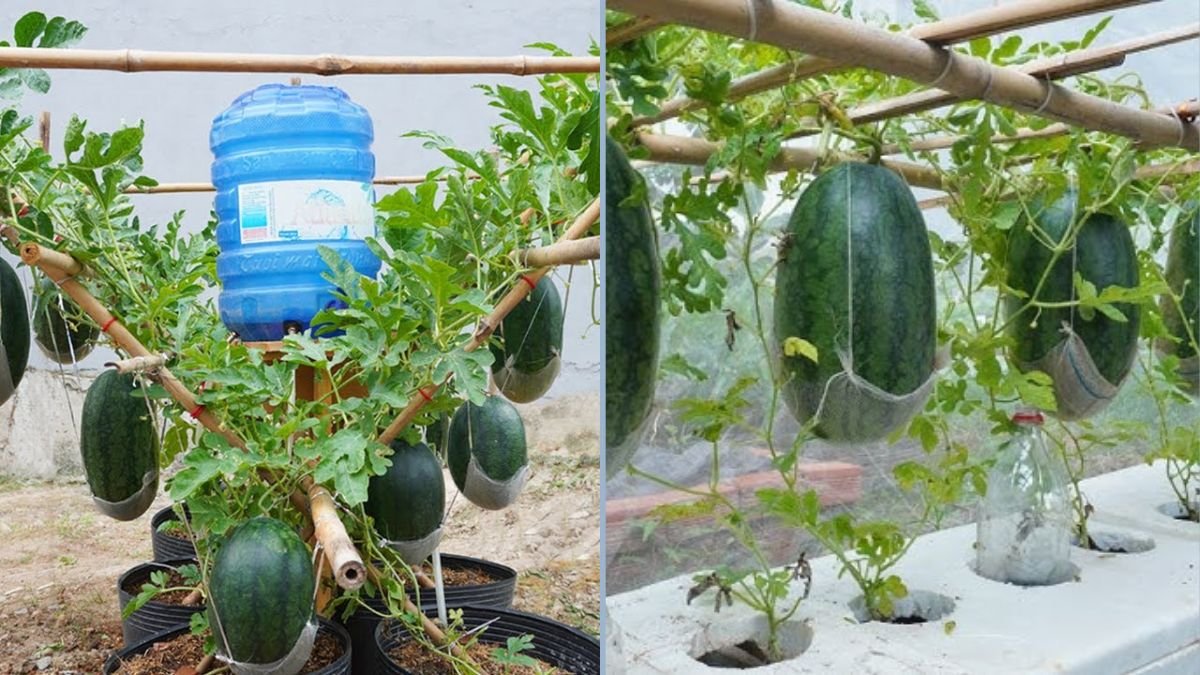Few fruits are as refreshing and satisfying as watermelon. Perfect for summer picnics, juices, desserts, or a healthy snack, watermelons are loved worldwide for their sweetness, juiciness, and vibrant flavor. Yet, achieving large, sweet, and succulent watermelons can be tricky for many gardeners. Improper soil, insufficient water, or overcrowding often results in smaller, less flavorful fruits.
The good news is that with the right techniques, soil preparation, and care, you can grow watermelons that are larger, sweeter, and more succulent than anything you buy from the market. This guide will provide a step-by-step approach to growing watermelons successfully, including planting tips, soil requirements, watering techniques, fertilization, and harvesting for maximum sweetness and size.
Why Grow Watermelon at Home?
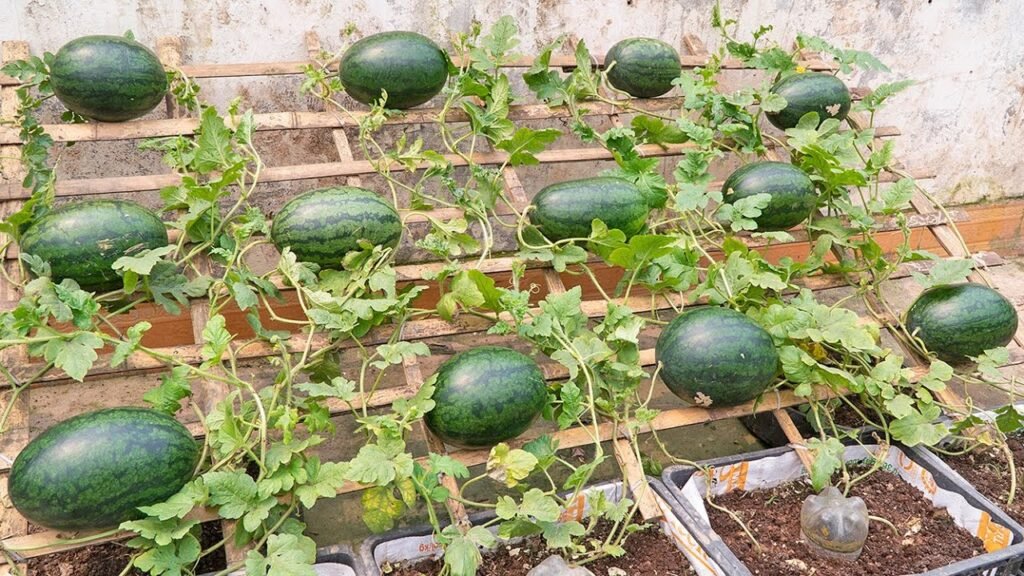
1. Superior Taste and Freshness
Homegrown watermelons are naturally sweeter and more flavorful than store-bought varieties. You control every step of cultivation, from soil to water, resulting in a better-tasting fruit.
2. Cost-Effective
Large watermelons from the store can be expensive. Growing your own ensures a continuous supply at a fraction of the cost.
3. Chemical-Free Produce
Growing watermelon at home allows you to avoid harmful pesticides and chemicals, producing safe, organic fruits.
4. Fun and Educational
Watermelon cultivation is a rewarding process for gardeners of all ages. It teaches patience, planning, and hands-on farming skills.
5. High Nutritional Value
Watermelons are rich in vitamins A, C, antioxidants, and water content, making them hydrating and healthful.
Understanding Watermelon Growth
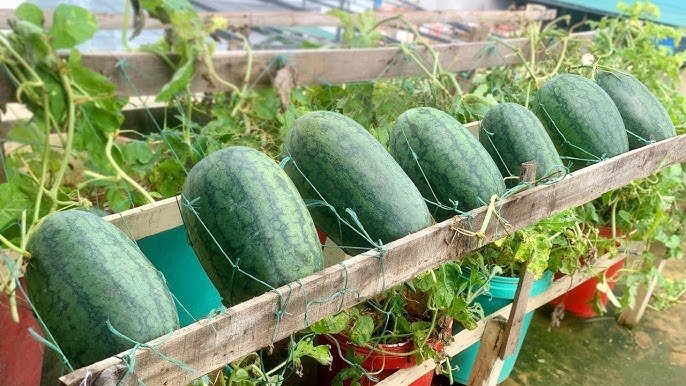
Watermelons are warm-season, sprawling vine plants that require careful attention to soil, sunlight, and water. Key growth factors include:
- Temperature: Watermelons thrive in 70–85°F (21–29°C) with warm soil.
- Sunlight: Full sunlight is critical—6–8 hours per day is ideal.
- Soil: Well-draining, nutrient-rich soil with organic matter ensures large fruits.
- Spacing: Vines require ample space (6–10 feet between plants) for sprawling growth.
- Pollination: Bees and other pollinators are essential for fruit set.
Understanding these requirements ensures that your watermelons grow larger, sweeter, and juicier.
Materials Needed
To grow watermelons successfully, you’ll need:
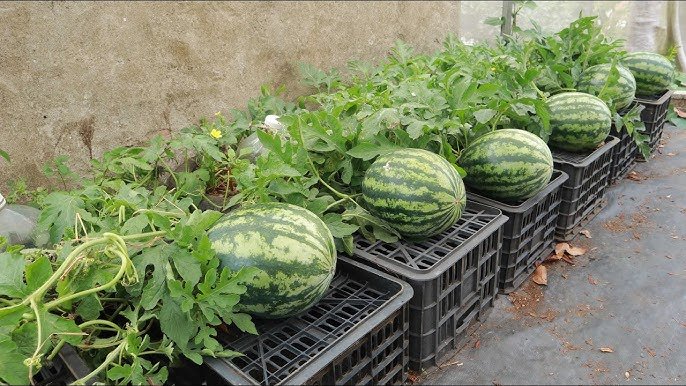
- Watermelon seeds – Choose varieties known for sweetness and size
- Compost or organic manure – Enhances soil fertility
- Garden soil – Well-draining and loose
- Mulch – Straw or dry leaves to retain moisture
- Watering tools – Hose or watering can
- Fertilizer – Balanced NPK fertilizer for growth and fruiting
- Trellis or space – Optional, if vertical growth is desired
Step-by-Step Guide to Growing Watermelon
Step 1: Choose the Right Location
- Select a sunny area with at least 6–8 hours of direct sunlight daily.
- Ensure adequate space for sprawling vines, or use a trellis for vertical growth.
- Well-drained soil is critical to prevent root rot and fungal diseases.
Step 2: Prepare the Soil
- Mix garden soil with compost or well-rotted manure to enhance fertility.
- Add sand or perlite for drainage, ensuring soil is loose and well-aerated.
- Prepare raised mounds or hills about 12 inches high and 3 feet apart. This improves drainage and keeps fruits off wet soil.
Step 3: Plant Watermelon Seeds
- Sow seeds 1–2 inches deep in soil mounds, spacing 2–3 seeds per hill.
- Thin seedlings to 1–2 strong plants per mound once true leaves appear.
- Water gently after planting to settle soil around seeds.
Step 4: Watering Watermelons
- Watermelons require consistent moisture, especially during flowering and fruiting.
- Avoid overwatering, which can lead to root rot.
- Drip irrigation or watering at the soil level is ideal; avoid wetting leaves.
- Mulch around plants to retain moisture and regulate soil temperature.
Fertilizing for Large and Sweet Fruits
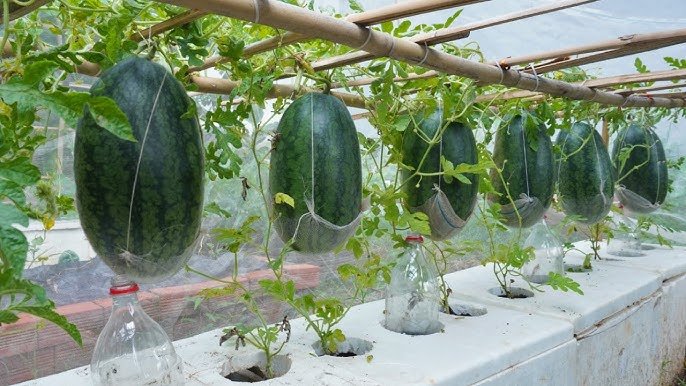
Stage 1: Early Growth
- Apply nitrogen-rich fertilizer to encourage strong vine and leaf development.
Stage 2: Flowering Stage
- Switch to a phosphorus and potassium-rich fertilizer to support flowering and fruit set.
Stage 3: Fruiting Stage
- Continue with potassium-heavy fertilizer to increase fruit size, sweetness, and juiciness.
Regular fertilization ensures optimal growth, fruiting, and flavor.
Pollination Tips
- Watermelon flowers require pollination for fruit set.
- Attract pollinators like bees by planting companion flowers nearby.
- For indoor or isolated gardens, hand-pollinate using a soft brush to transfer pollen between male and female flowers.
Pruning and Vine Management
- Pruning: Remove excess lateral vines and weak shoots to focus plant energy on developing large fruits.
- Vine Training: If space is limited, train vines along trellises or pathways to prevent crowding.
- Fruit Placement: Use mulch or soft bedding under fruits to prevent direct soil contact, reducing the risk of rot.
Common Problems and Solutions
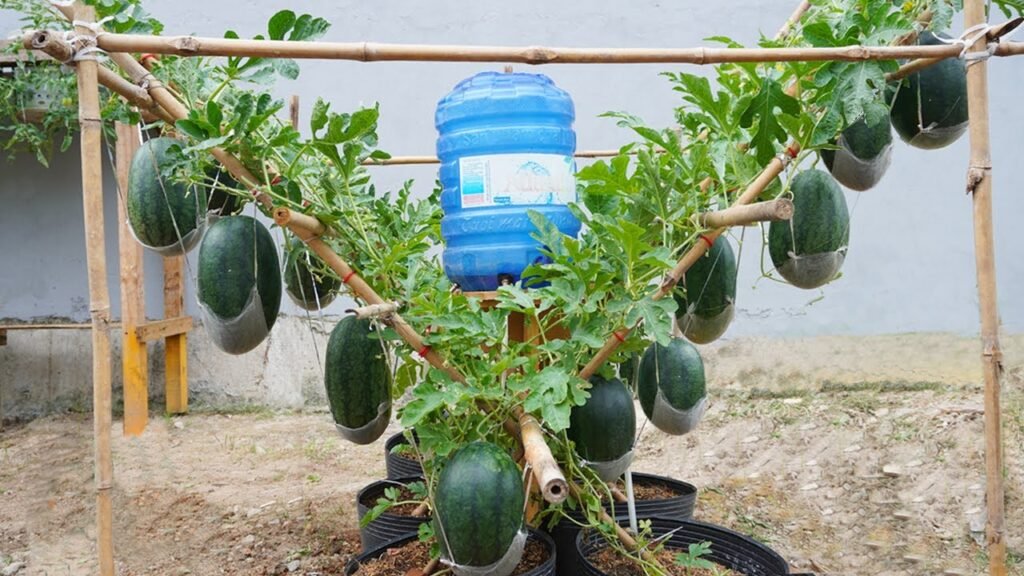
- Blossom-End Rot
- Cause: Calcium deficiency and inconsistent watering
- Solution: Apply calcium-rich fertilizers and maintain even soil moisture
- Powdery Mildew
- Cause: High humidity and poor airflow
- Solution: Provide adequate spacing, remove infected leaves, and use organic fungicides
- Pests
- Aphids, cucumber beetles, and vine borers can damage plants
- Solution: Monitor regularly, remove pests manually, or apply neem oil
Harvesting Watermelon
- Timing: Fruits are ready when the tendril nearest to the fruit turns brown and dries, the skin loses gloss, and the bottom yellow spot appears.
- Method: Cut fruits from vines using a sharp knife, leaving a small portion of stem attached.
- Post-Harvest: Store in a cool, shaded area to maintain sweetness and freshness.
Advantages of Growing Watermelons This Way
- Big Fruits: Proper soil, spacing, and pruning produce larger melons.
- Sweetness and Juiciness: Adequate watering, mulching, and fertilization enhance flavor and water content.
- Space-Efficient: Mounds and trellising maximize limited garden space.
- Cost-Effective: Reduces dependence on store-bought watermelons.
- Healthy and Chemical-Free: Homegrown fruits are naturally safe and nutritious.
Tips for Maximizing Watermelon Yield
- Choose Sweet Varieties: Look for varieties labeled for high sugar content and large fruits.
- Maintain Soil Health: Use compost and organic fertilizers regularly to sustain nutrients.
- Consistent Watering: Avoid drought stress to prevent small, bland fruits.
- Mulching: Keeps soil moisture steady and regulates temperature.
- Pruning: Remove weak vines to redirect energy to fruits.
- Pollination: Encourage natural pollinators or hand-pollinate for higher fruit set.
Creative Uses for Homegrown Watermelon
- Fresh Eating: Slice and serve chilled for summer snacks.
- Juices and Smoothies: Blend with other fruits for refreshing beverages.
- Salads: Combine with feta, mint, or cucumber for refreshing salads.
- Desserts: Use in sorbets, popsicles, or fruit tarts.
- Pickling: Preserve rinds for sweet or savory pickles.
Conclusion
Growing watermelons to be big, sweet, and succulent is achievable with the right techniques. Proper soil preparation, watering, fertilization, pruning, and pollination all contribute to producing high-quality fruits that outshine store-bought varieties.
By following this step-by-step guide, you can cultivate watermelons that are larger, juicier, and sweeter, providing a bountiful harvest for your family and friends. This method is perfect for backyard gardeners, small-space growers, and anyone looking to enjoy the satisfaction of growing fresh, delicious watermelons at home.
Start your watermelon garden today and enjoy the rewarding taste of homegrown, succulent fruits that make summer even more enjoyable!
